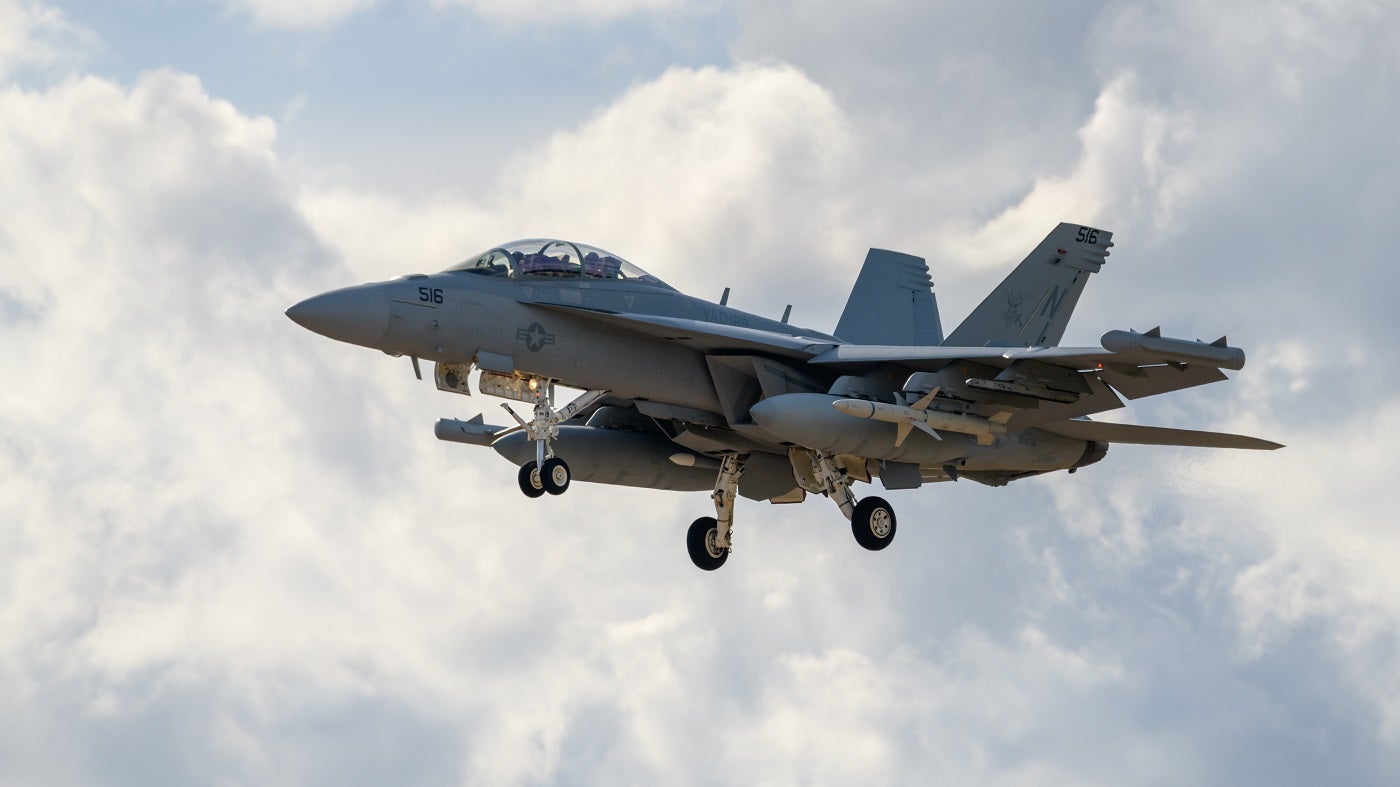
Raytheon Technologies has been awarded a $650,433,839 contract by the US Naval Air Systems Command for the production and delivery of low-rate initial production (LRIP) Lot III Next Generation Jammer (NGJ) Mid-Band (MB).
The contract includes the production of 15 NGJ-MB LRIP ship sets, with two pods per ship set, 11 for the US Navy and four for the Government of Australia, and associated spares, support equipment, non-recurring engineering and related data.
The NGJ-MB programme is a joint effort between the US Navy and the Royal Australian Air Force, with Australia contributing funding and programme management support.
Australia requested a $125m EA-18G Growler sale from the US in 2021. The US State Department approved the sale covering an EA-18G aircraft (Lot 38 or later) from the US Navy stock and associated defence services and equipment.
Next Generation Jammer is set to enhance US electronic warfare capabilities
GlobalData’s “The Global Electronic Warfare Market 2020-2030” report states that the US military has continued to make robust investments in the electronic warfare systems domain, a trend that is expected to continue over the forecast period.
The country is explicitly focusing on developing advanced EW products and enhancing the capability of existing warfare platforms. For instance, the Next Generation Jammer programme will integrate advanced electronic attack capability into the EA-18G Growler jet.
The NGJ-MB system will replace the legacy ALQ-99 Tactical Jamming System currently used by the Navy’s EA-18G Growler aircraft and will provide greater jamming capabilities against advanced threats, including enemy air defences and communication systems.
James Marques, aerospace, defence, and security analyst at GlobalData, offered his view: “The ALQ-99 is quite an old system now dating back to the Vietnam war. They had some reliability issues in the past and may be interfering with signals from newer AESA radars seen on many modern aircraft. The EA-18G is a very modern electronic attack aircraft where the two aircrew needs effective and reliable equipment to operate under a high workload in the cockpit.
“The new pods are meant to address this by being more powerful, have open-source systems for software and hardware upgrades, and use AESA technology themselves sometimes. Details on jamming tech like this can be sparse but consider it a likely upgrade in most or all ways.”
The system will also be able to operate in highly contested environments, including the ability to counter integrated air defence systems.
Raytheon started LRIP Lot 1 production of the NGJ-MB system in 2021. The $171.6m deal furthered the programme from development to production and deployment.
Work on the NGJ-MB LRIP Lot III contract will be performed in various locations and is expected to be completed in April 2024.




